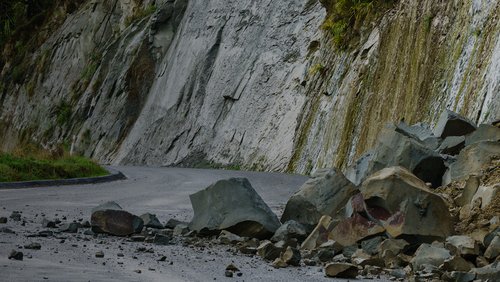13 May 2025
The transition to modern, low-emission ferries is expected to bring significant benefits to the Auckland region’s public transport network, while the associated technology brings both challenges and opportunities.
As part of a mission to create a transport future for Tāmaki Makaurau Auckland that’s cleaner, quieter and more comfortable, Auckland Transport (AT) has ordered four new technology ferries to replace the existing fleet that is reaching the end of its useful life. The transition to modern, low-emission ferries is expected to bring significant benefits to the region’s public transport network. These include improving ferry reliability, capacity and customer experience. Also, a significant reduction in diesel particulate and greenhouse gas emissions, and lower whole-of-life costs, driven by the significantly lower cost of electricity as a fuel, plus expected maintenance savings.
To operate effectively, the ferries require resilient, fast and high-power battery charging of up to 3.3MW per berth, using novel technology, distribution and control solutions.
The Megawatt Charging System
To enable this transition, the programme relies upon the introduction of megawatt level charging infrastructure capable of fuelling the in-production and future ferry designs. The Megawatt Charging System (MCS) is a standardised system currently under development by industry organisation group CharIN. The Auckland project is one of the first marine MCS deployments globally, and the first in New Zealand.
A key benefit of standardised MCS is that it enables the interoperability between existing and future ferry and charging designs. This means AT avoids being locked into a single ferry or charging provider and can adopt future product designs as they emerge.
The first four ferries under construction are of two different types: 200-passenger fully electric and 300-passenger plug-in hybrid electric. Despite differences in design and manufacturer, both ferry platforms will share common MCS chargers.
Power conversion
To provide power to the ferries, electricity from the utility (at either 11kV or 22kV) is transformed to 466 Vac via a 3.7MVA transformer which has delta and star secondary LV windings. Each LV winding supplies a liquid cooled charging unit which rectifies the AC to a controllable variable voltage DC output. Two smaller chargers are required per berth to provide the full berth capacity with the vessels having independent port and starboard battery banks that are charged concurrently.
The DC power is conveyed by multiple parallel circuits of four core conductors (two parallel DC circuits per cable) to the MCS dispenser, located on a floating pontoon. The MCS dispenser provides the pluggable side of the interface, with power being conveyed via two plugs per dispenser connected to sockets on the vessel. The MCS dispenser uses a glycol cooled cable and plug system to reduce the amount of copper required to convey the current, which in turn makes the cable flexible and the arrangement light enough to be manually handled for charging operations.
Once physical connections are made between the landside and the vessel, control systems take over via handshaking and prescribed protocols to confirm correct operation and safety before the charging process begins.
Various other systems are required to support the main charging equipment. These include ancillary power supplies, HVA, chiller systems for charger liquid cooling, HV switchgear and networking.

Image: EV Maritime
Technology challenges and opportunities
While MCS will provide the Auckland ferry network with current and future flexibility in ferry designs, the introduction of new technology comes with plenty of practical challenges. Technical challenges include managing intermittent load profiles causing network peaks; the availability of sufficient network power supplies; and planning, designing and constructing installations close to and above water. Also, constructing and operating in some of Auckland’s most high profile public locations, and using non-typical isole-terre earthing systems.
The new technology is also being delivered while the relevant international MCS standards are being finalised. This creates additional complexity with respect to validating regulatory compliance and ultimately demonstrating a safe installation for maintainers, operators and the public transport users of Auckland. This is being managed via engagement with regulatory authorities and following processes detailed by WorkSafe to comply with the Electricity Regulations.
Along with technical challenges, there are planning, construction and operational challenges, all of which are overcome by solution development using an iterative design process involving AT (the owner), Beca and Tonkin + Taylor (the design team), ABB (charging system designer and supplier), Brian Perry Civil (the constructor), Vector (the utility) and multiple stakeholders within a collaborative programme team.
With ferry electrification underway in a number of overseas jurisdictions, and New Zealand’s first electric ferry Ika Rere already successfully operating in Wellington, this project provides a great opportunity to grow our local knowledge and expertise in the electrification of marine transportation.
Moving towards operation
Auckland’s new ferries will be operated on public transport services by transport operator Fullers360, who are closely involved in the design and construction of the ferries and preparing to migrate key ferry routes from diesel to electricity as an energy source.
The staged nature of the programme will allow for lessons to be captured from the first charger installation at Half Moon Bay ferry terminal, and incorporated into design and installation improvement at future sites within the first stage and beyond.
This project is of regional and international interest as marine electric propulsion technology continues to mature and global momentum in marine decarbonisation continues. With rising fuel costs, the ability to embrace lower cost fuel sources is an attractive opportunity. Many interested parties will be watching closely when the first ferry charger and low-emission ferries arrive in Auckland this year.
Wernher Roding MEngNZ is Principal Electrical Engineer at Beca.
This article was first published in the March 2025 issue of EG magazine.







